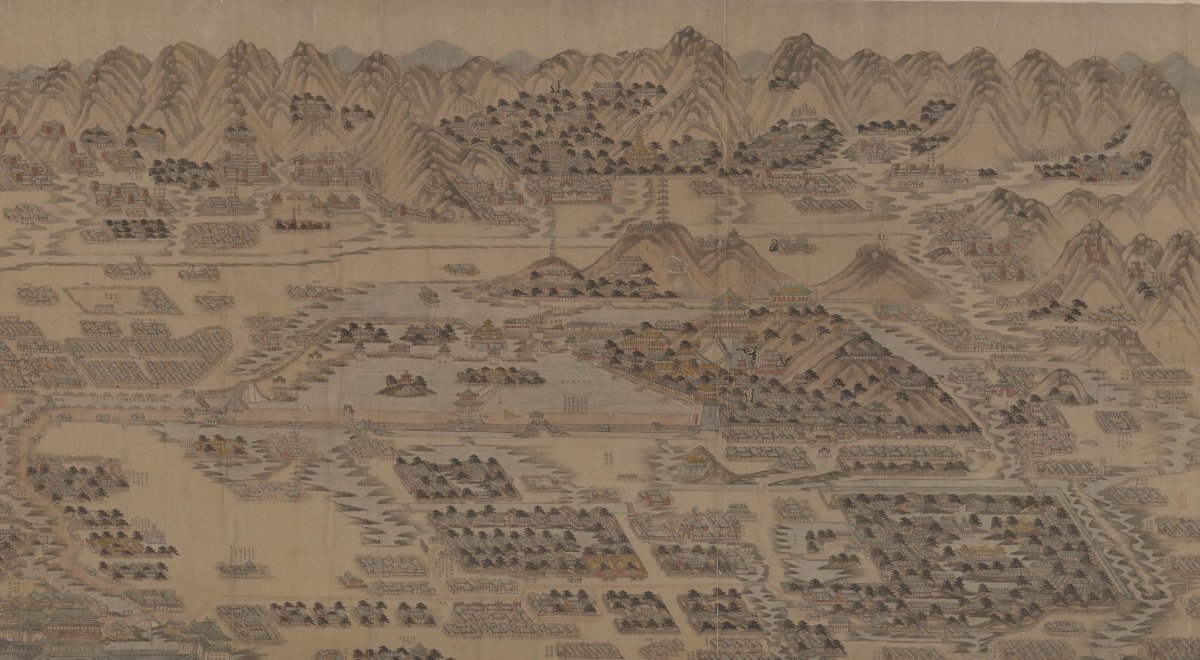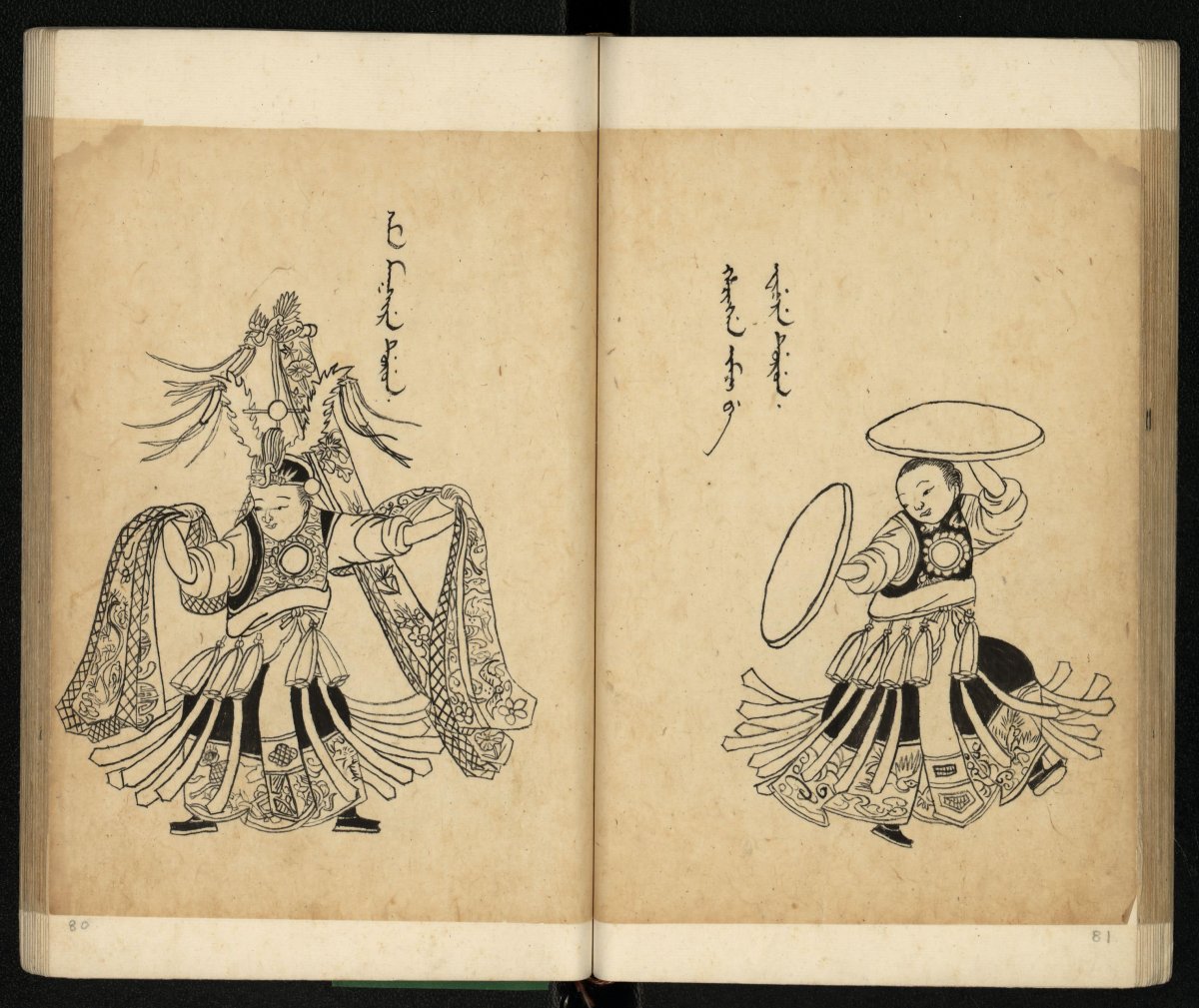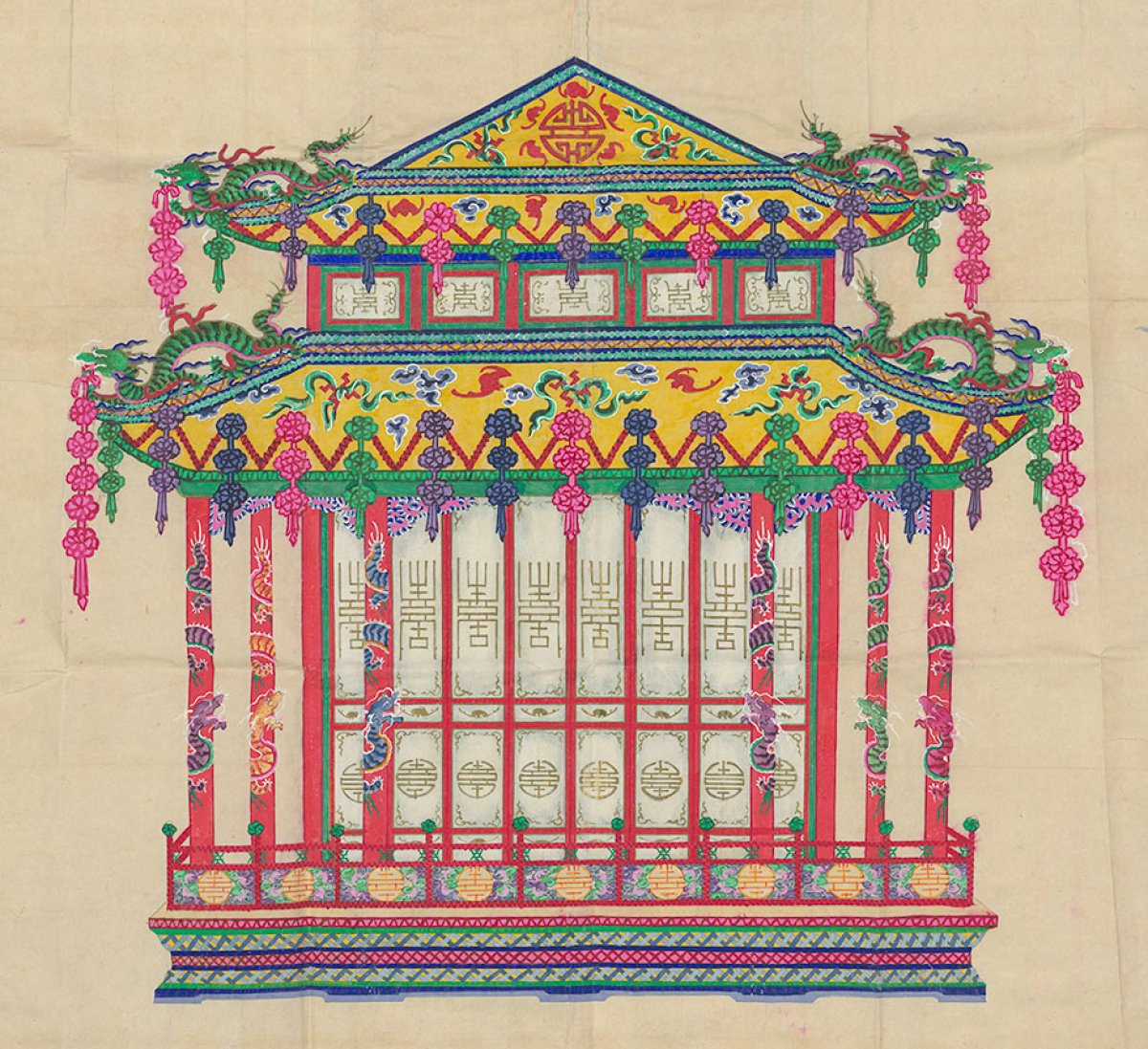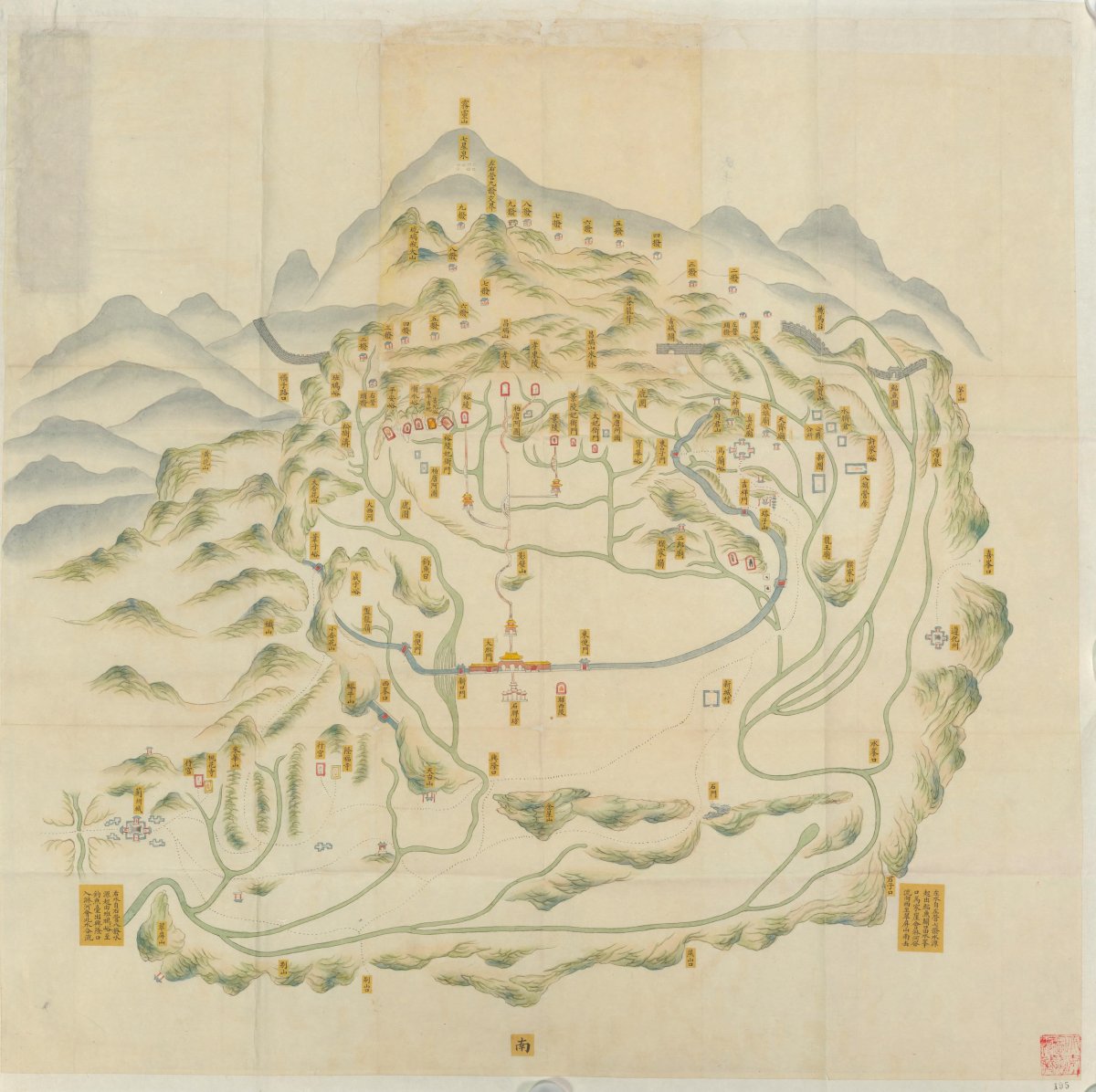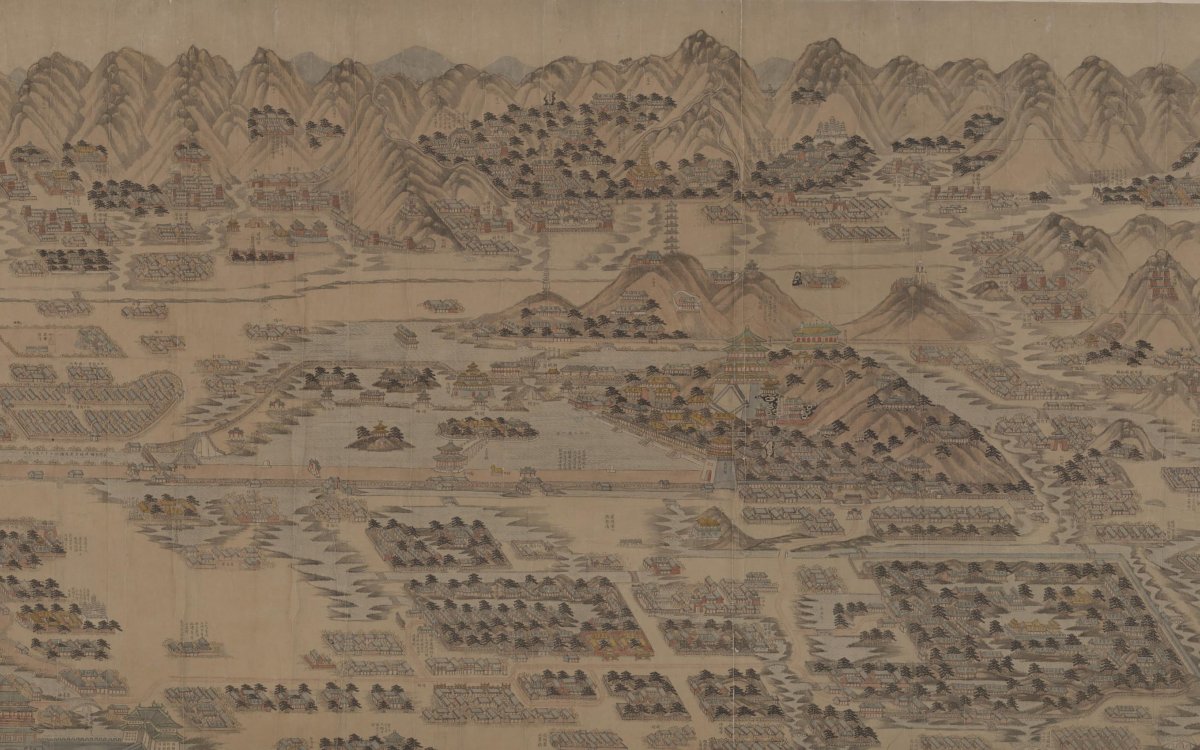
The Five Palace Gardens 1904, National Library of China
The early Qing court renovated their quarters in the palace, but many emperors preferred not to reside within its walls, finding life there limiting and drab. In the seventeenth and eighteenth centuries, the court increasingly expanded the imperial gardens to the north-west of the capital. Pleased with the works done under his reign, the Kangxi emperor (r. 1661–1722) often conducted affairs of state there.
His efforts were surpassed by those of his son and grandson, the Yongzheng (r. 1722–1735) and Qianlong (r. 1735–1795) emperors, who transformed the landscape. Artificial lakes and accommodation for the emperor’s entourage and his administration spread across a large area, with features adopted from gardens in the region south of the Yangzi. These new pleasure gardens also came to embody certain aesthetic ideals, but maintaining them put significant strain on court funds.
Surviving maps of the gardens date to the late Qing period, when the area was often referred to as the Five Gardens and Three Mountains. Many maps adopt the same perspective, looking north-west from above Beijing. The Garden of Cultivated Harmony (Yiheyuan, now known as the Summer Palace) is located at the centre of the example shown here, with the pagoda on Longevity Hill appearing much as it does today. The Garden of Perfect Brightness (Yuanmingyuan, now known as the Old Summer Palace) is located below it.
The early Qing court renovated their quarters in the palace, but many emperors preferred not to reside within its walls, finding life there limiting and drab. In the seventeenth and eighteenth centuries, the court increasingly expanded the imperial gardens to the north-west of the capital. Pleased with the works done under his reign, the Kangxi emperor (r. 1661–1722) often conducted affairs of state there.
His efforts were surpassed by those of his son and grandson, the Yongzheng (r. 1722–1735) and Qianlong (r. 1735–1795) emperors, who transformed the landscape. Artificial lakes and accommodation for the emperor’s entourage and his administration spread across a large area, with features adopted from gardens in the region south of the Yangzi. These new pleasure gardens also came to embody certain aesthetic ideals, but maintaining them put significant strain on court funds.
Surviving maps of the gardens date to the late Qing period, when the area was often referred to as the Five Gardens and Three Mountains. Many maps adopt the same perspective, looking north-west from above Beijing. The Garden of Cultivated Harmony (Yiheyuan, now known as the Summer Palace) is located at the centre of the example shown here, with the pagoda on Longevity Hill appearing much as it does today. The Garden of Perfect Brightness (Yuanmingyuan, now known as the Old Summer Palace) is located below it.
The Qing dynasty ruled China for nearly 270 years, lasting from 1644 until 1911; it was the last of China’s so-called conquest dynasties, the country being governed in this period by the Manchus, an ethnic group from beyond its frontiers. Ten emperors ruled in that period, as set out below.
List of Qing Emperors 1644-1911
- Shunzhi Emperor 1644 –1661
- Kangxi Emperor 1662 –1722
- Yongzheng Emperor 1723 –1735
- Qianlong Emperor 1736 –1795
- Jiaqing Emperor 1796 –1820
- Daoguang Emperor 1821–1850
- Xianfeng Emperor 1851–1861
- Tongzhi Emperor 1862–1874
- Guangxu Emperor 1875–1908
- Xuantong Emperor 1909–1911
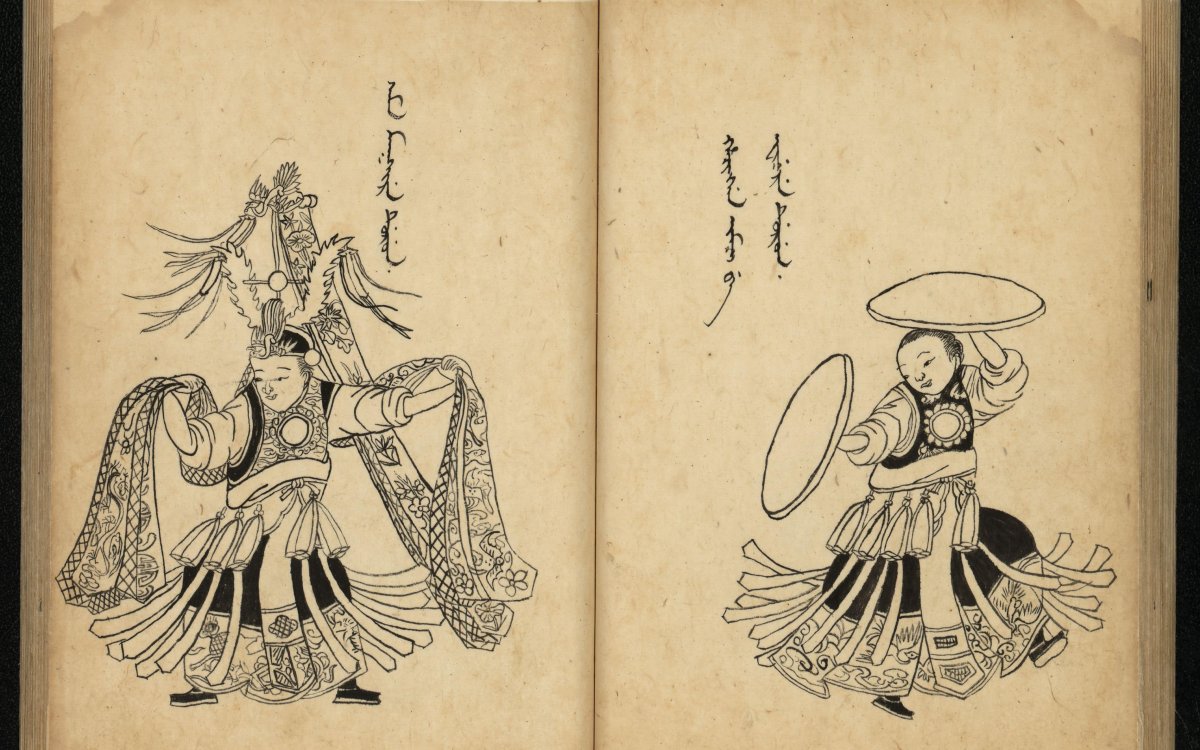
Illustrated Manchu Rituals, National Library of China
The imperial family also reinforced its claim to the culture of the north-east through practising shamanic rituals at court. As a tradition separate from the practices of the Mongolians (followers of Tibetan Buddhism) and the Chinese, the shamanism of Manchuria allowed the court to promote a distinct sense of identity. Shamans traditionally connected their communities with spirits and ancestors. They journeyed to ‘the other world’ through dances and chants and acted as healers and diviners in their clans. But the rituals performed for the imperial line in Beijing represented a shift in practices and customs. The original oral tradition was replaced with a fixed written code for use at court. Anyone who was not a Manchu was forbidden to view these rituals, but the emperors themselves rarely attended.
The imperial family also reinforced its claim to the culture of the north-east through practising shamanic rituals at court. As a tradition separate from the practices of the Mongolians (followers of Tibetan Buddhism) and the Chinese, the shamanism of Manchuria allowed the court to promote a distinct sense of identity. Shamans traditionally connected their communities with spirits and ancestors. They journeyed to ‘the other world’ through dances and chants and acted as healers and diviners in their clans. But the rituals performed for the imperial line in Beijing represented a shift in practices and customs. The original oral tradition was replaced with a fixed written code for use at court. Anyone who was not a Manchu was forbidden to view these rituals, but the emperors themselves rarely attended.
The Qing rulers sought to demonstrate their achievements in the Chinese tradition while maintaining a separate ethnic identity; both efforts were crucial to the continuation of their rule. On occasion, the court took steps to ensure the Manchus kept up their martial skills and language, since these were seen as vital to being Manchu.
Court dress was particularly strict in differentiating social ranks and emphasising Manchu culture. It was also during the Qing period that the wearing of a queue or pigtail for men, a fashion alien to the majority Han Chinese people, was introduced.
1. Have students conduct an internet research task at home investigating ritual and dress during the Qing period. They should be prepared to discuss these topics at the next lesson.
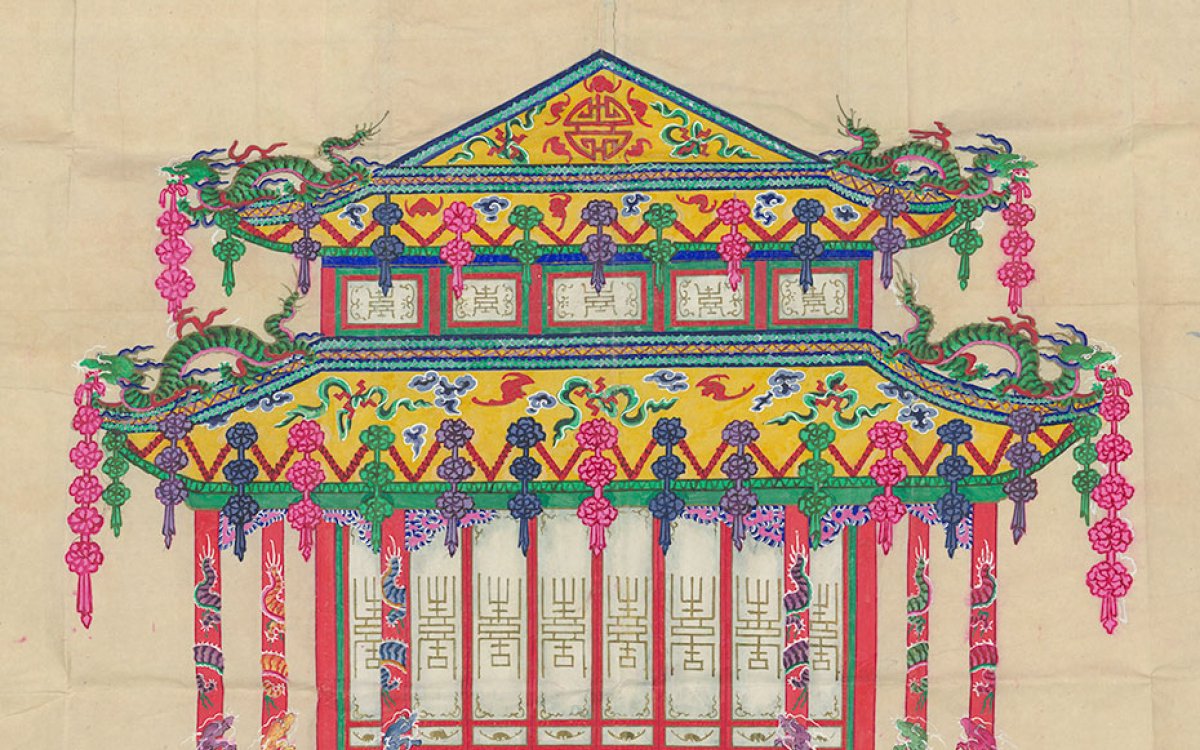
Decorated Tent Installed before the Hall of Complete Tranquility, Yangshi Lei Archives, late 19th century, National Library of China
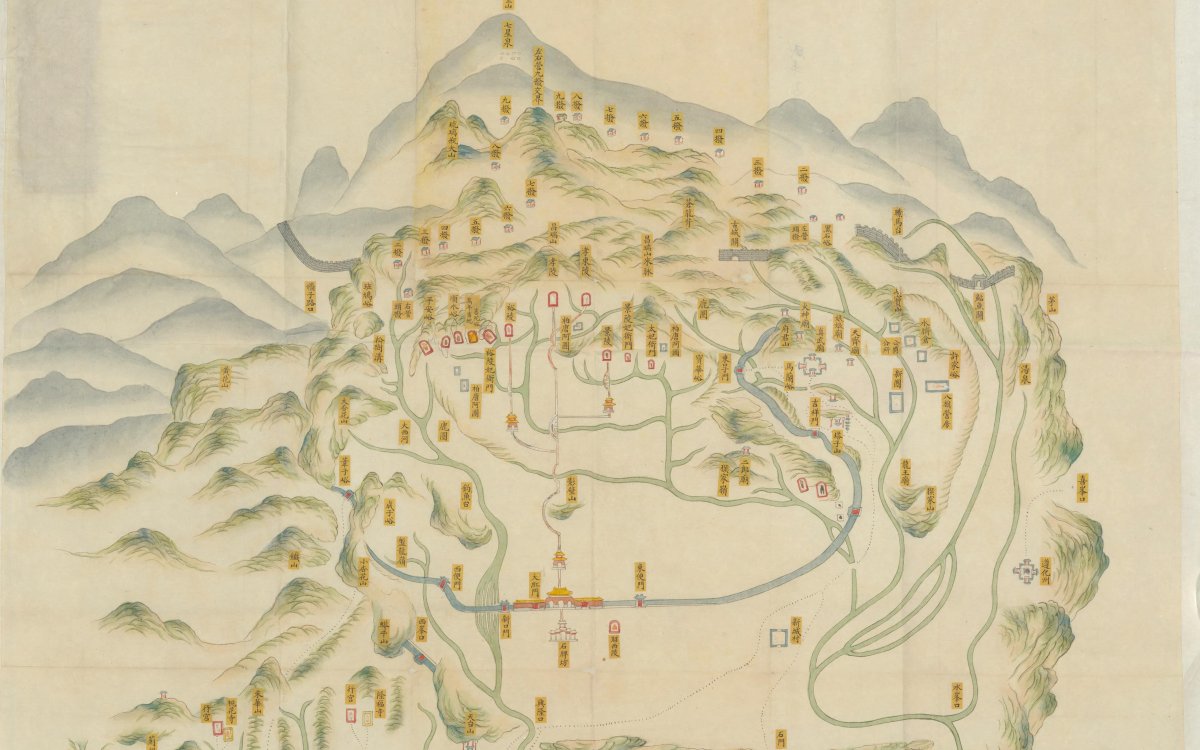
Topography of Eastern Qing Tombs, Yangshi Lei Archives, late 19th century, National Library of China
The Lei family produced imperial architects over seven generations, starting in the seventeenth century. Members of the family oversaw work on imperial buildings, gardens and tombs. Surviving material from the Yangshi Lei archives provides an insight into the design of numerous iconic sites around Beijing. The Leis were also involved in making arrangements for imperial spectacles, including birthday celebrations and weddings. Plans of tents for celebrations in the late Qing give an indication of the splendour of such events.
The final resting places of the emperors were split between two sites. The first two emperors of the Qing were interred at a site north-east of Beijing now known as the Eastern Tombs. The third was buried southwest of the city, creating what is now the area of the Western Tombs.
The Lei family produced imperial architects over seven generations, starting in the seventeenth century. Members of the family oversaw work on imperial buildings, gardens and tombs. Surviving material from the Yangshi Lei archives provides an insight into the design of numerous iconic sites around Beijing. The Leis were also involved in making arrangements for imperial spectacles, including birthday celebrations and weddings. Plans of tents for celebrations in the late Qing give an indication of the splendour of such events.
The final resting places of the emperors were split between two sites. The first two emperors of the Qing were interred at a site north-east of Beijing now known as the Eastern Tombs. The third was buried southwest of the city, creating what is now the area of the Western Tombs.
Popular imagination of Chinese architecture is dominated by the Great Wall, but Qing emperors expended resources on the architecture of many types of structures including palaces and temples.
Assign a Qing emperor to groups of students working in twos or threes. Students will investigate the emperor and their architect’s contribution to Qing architecture.
- What did they build, modify or renovate?
- Why?
- Can evidence of this emperor’s initiatives still be found today?
- What are the characteristics of Qing architecture?
- Did this change over the period of the dynasty?
- Why?
